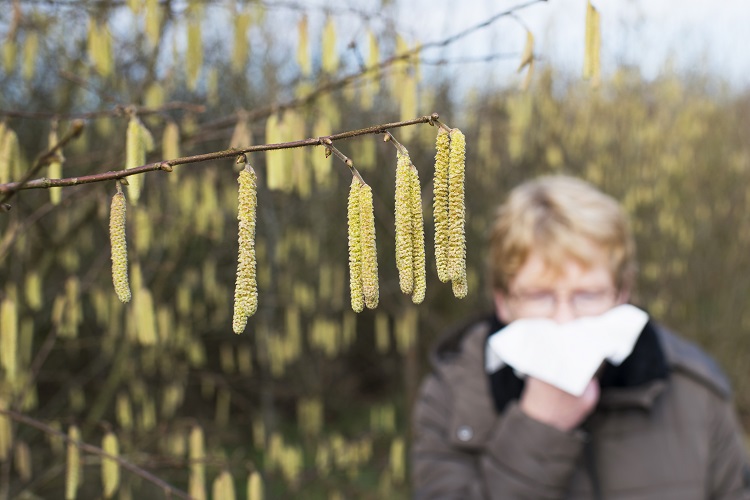 Source: iStock.com/schulzie
Source: iStock.com/schulzie
Knowledge for the right decisions: The most popular allergy apps at a glance
19. April 2019 Published by Raphael DoerrA smartphone and the right app is enough to make life a little easier for allergy sufferers. Our blog post about “Husteblume”, the allergy app of the Techniker Krankenkasse, was very well received. And of course there are a number of other useful applications. To make orientation in the app jungle easier, we have compiled the most informative pollen apps for you in the following overview (based on the current reviews in the media).
The data supplied by the pollen app enables people who suffer from a pollen allergy or hay fever to make an informed decision on whether to adjust the medication they take or change certain daily activities to reflect the forecasts. The hope is that the quality of life of sufferers – and so their ability to work – will improve and ultimately, of course, the healthcare system will be less burdened as a result of emergency visits and the like. [1]
Most pollen apps offer very similar functions, but the key one is always a forecast of the pollen count. Many people obtain information on that from the German National Meteorological Service (DWD). It, together with the foundation German Pollen Information Service, measures the daily pollen concentration at 45 locations in Germany. The DWD’s forecast applies to the current and next two days.
Husteblume – Techniker Krankenkasse’s allergy app
Husteblume is a free app that is financed by the health insurer Techniker Krankenkasse and is available to anyone. Its content focuses on a symptom diary, an analysis and a self-test. There’s also a small plant glossary. The diary can be used to record how you feel on a particular day, in other words, whether your nose is running or your eyes are watery. You can collect that data out of personal interest or show it the next time you visit your physician.
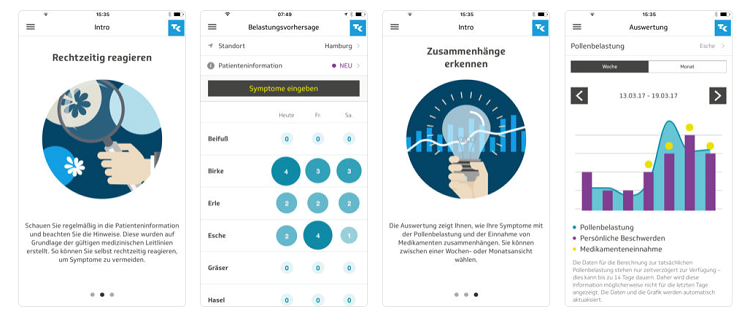
Figure: Screenshot of Husteblume – Techniker Krankenkasse’s allergy app
Pollen count forecast – Hexal’s app
Hexal’s “pollen count forecast” and the “Pollen Radar” from ratiopharm include an annual calendar showing the typical months for a particular type of pollen.
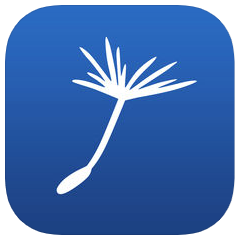
Whatever type of pollen is currently in the air – Hexal’s app shows it. Its main functions are:
• The pollen count forecast for 15 plants that cause allergies: Up-to-date and for the specific location
• 7-day forecast (when you rotate the display)
• Clear navigation with tab bars
• Annual pollen calendar for the 15 plants
• Icons can also be distinguished by their shape (for users with a red-green vision deficiency)
• Clear forecast maps for Germany and its federal states
• Pinpointed search using the location, postal code or GPS positioning in Germany
• Trend for Germany: How the current pollen count will change
• Customization: Users can select their own locations and plants in the settings
• Display of push messages to warn you when “your” pollen is forecast
• Information on the plants that cause allergies
• Diary function
• Updating of the data three times a day
• Emergency telephone numbers

Figure: Screenshot of the pollen app from Hexal
Off on vacation – pollen knows no borders
The core function of most allergy apps is always the pollen count forecast. That means all the apps need to at least know their user’s location so as to find the forecast for the region in question. To ensure you can plan a relaxed holiday unmarred by pollen, you’re advised to download the pollen count forecast from the Austrian Pollen Information Service of the Medical University of Vienna. It’s available for Android and iOS.
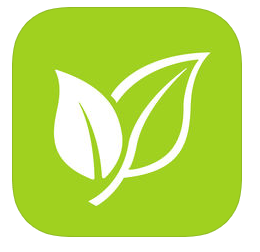
In cooperation with local and international institutions, it provides a reliable pollen count forecast for the next three days for Austria, Germany, Switzerland, South Tyrol, Sweden, Spain and the UK. The app does not have any advertising, is free of charge and is available for iOS and Android.[2]
The start screen shows the hourly allergy risk over the whole day to help guide users as to when the highest counts can be expected, also taking into account air quality parameters (such as ozone and particulates). Recommendations on how to treat eye, nose and respiratory complaints for various load levels (zero to high) are likewise provided.

Figure: Screenshot of the pollen app from the Austrian Pollen Information Service
Pollen Radar from ratiopharm
The ratiopharm Pollen Radar can be used to create a personal allergy profile. Users define what pollen is shown and can see the severity of their allergy for every single type of pollen. That means the load for the individual user’s vicinity is displayed. Besides the latest pollen count, users can also find the weather forecast for their region. The most important functions are: definition of your current position by GPS or manually, customized pollen count and weather forecast for the next six days, a map of Germany with an overview of nationwide pollen levels, and everyday tips relating to the subject of pollen allergies. ratiopharm’s Pollen Radar is likewise available for iOS and Android and can be downloaded free of charge.
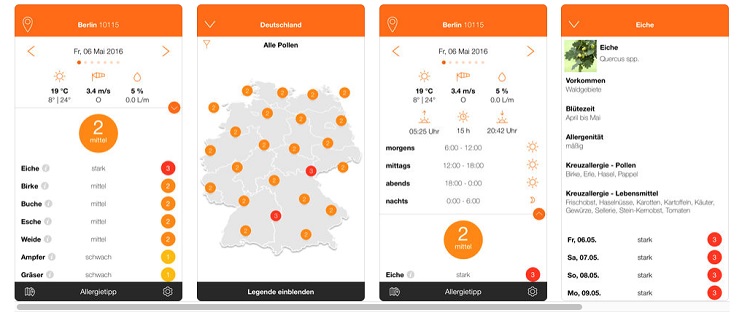
Figure: Screenshot of the pollen Radar from Ratiopharm
The personal pollen collector is coming
However, the pulmonologist Professor Karl-Christian Bergmann still sees large deficits when it comes to measuring pollen counts for allergy sufferers. “To find out what pollen and what levels of it are in the air, you set up pollen collectors on roofs,” said the expert from the Comprehensive Allergy Center Charité in Berlin to the news agency dpa. Measurements are taken at around 45 locations in Germany. “But we can only guess what’s in the air at a distance of ten kilometers away,” writes the physician in the German medical journal Ärztezeitung.[4]
It was difficult for individual patients with allergic rhinitis or allergic asthma to rely on pollen data measured 30 or 60 kilometers away. “There’s a large margin of error.” The geoinformatics specialist Professor Klaus Böhm from Mainz and the software developer Torsten Sehlinger now aim to plug that gap by developing a personal pollen collector intended to measure the user’s personal allergen load. The device is still being developed and is to undergo trials at the Charité Hospital in Berlin in the next few days.
It may be that some of the pollen apps do not yet meet all the requirements demanded by medical experts, but it’s better to have an early warning system installed on your smartphone and so know when you need to take action rather than knowing nothing and experiencing irritated eyes or a running nose on a walk the next time there is a severe level of pollen in the air.
You can download the German pollen calendar here: https://www.allergieinformationsdienst.de/fileadmin/ALLERGIEINFO/Service/Pollenflug/Pollenflugkalender.pdf
 Comments
Comments
 en
en 







